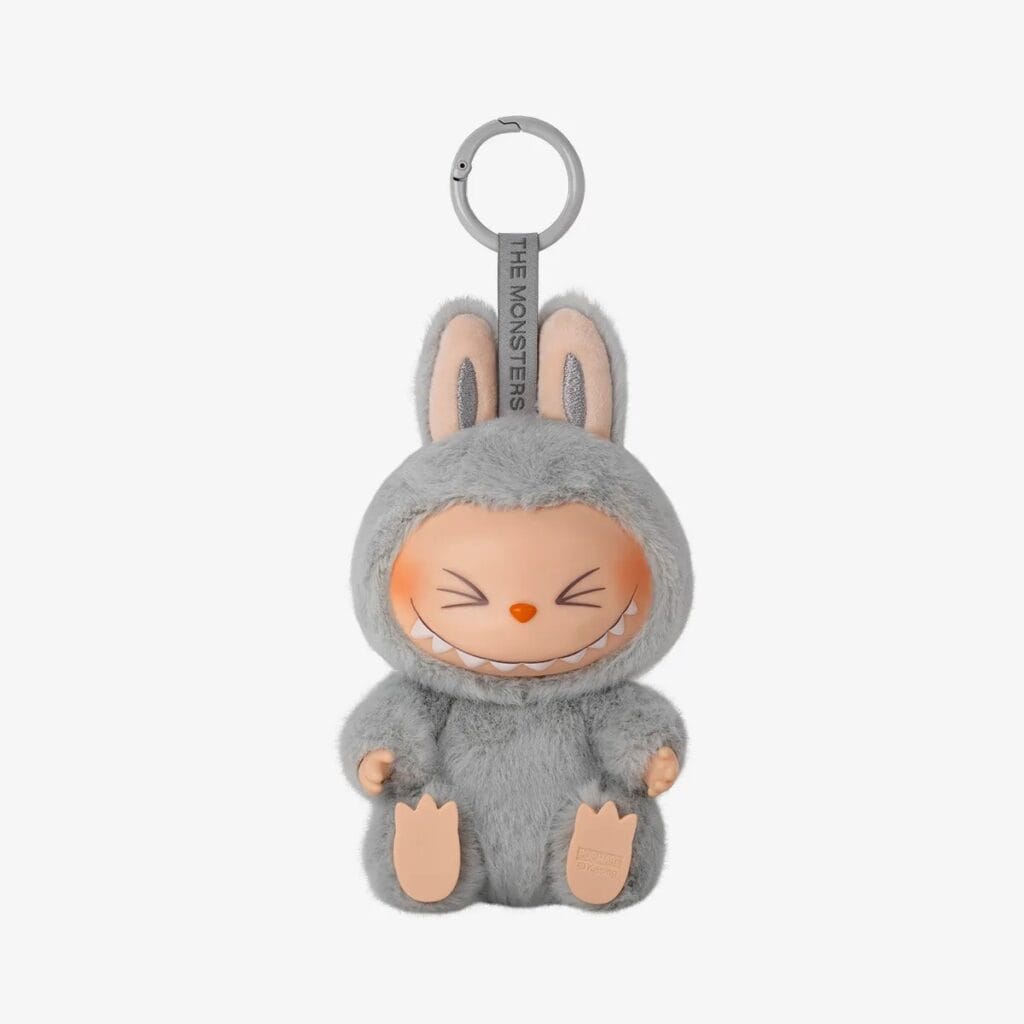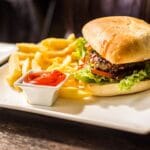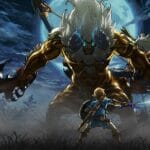Labubu: The Fun Plush Monster That Took 2025 by Storm
Labubu is a mischievous, plush monster with pointy ears, big eyes, and a cheeky grin featuring nine sharp teeth. Turned into collectible dolls by Pop Mart, Labubu exploded in popularity in 2025. Let’s dive into its journey from storybook to global icon—and debunked controversies along the way.

The Origin of Labubu: From Nordic Folklore to Plush Fame
Kasing Lung is an artist from Hong Kong. He grew up in the Netherlands. In 2015, he introduced Labubu in his children’s series called The Monsters. Inspired by Scandinavian forest spirits, Lung drew a playful yet mischievous elf with wide eyes, pointy ears, and a toothy grin. Labubu wasn’t alone—she had companions like Zimomo (the tribe leader), Tycoco (her skeletal-like boyfriend), and Mokoko, all part of a whimsical gang that captured the imagination of childhood (Wikipedia).
In 2019, Pop Mart, a toy company from Beijing, teamed up with Lung. They launched real versions of these characters. Their first Labubu key-ring series, “Exciting Macaron,” debuted in October 2023. By 2025, Pop Mart had over 300 Labubu variations. These ranged from $15 vinyl figurines to a life-size 4-ft mint-green figure. This figure sold for $170,000 at a Beijing auction (Wikipedia).
How Labubu Became Viral: Celebrity Endorsement Meets Social Media
Labubu became popular in April 2024. This happened when BLACKPINK star Lisa shared an Instagram story. In the story, she showed the doll attached to her Louis Vuitton bag. That one image caused a 30% increase in sales in Southeast Asia. It even made fans go into buying frenzies in Thailand and other places.
Soon after, celebrities like Rihanna, Dua Lipa, Kim Kardashian, and David Beckham shared their own Labubu accessories. These endorsements turned Labubu into a Gen Z and millennial status symbol (Axios).
TikTok and Instagram fueled the trend further. The hashtag #Labubu boasts over 1 million TikTok posts, and weekly uploads in the U.S. exceed 32,000. Unboxing videos—showing the rush to find rare “secret” dolls—rake in millions of views. Notable creators like Lana Rae and Baochi Travel post Labubu videos that attract views in the millions (Axios).
Labubu’s “ugly-cute” aesthetic—part adorable, part slightly creepy—struck a chord. Fans engage creatively, making memes, cosplay, fan art, and bag‑charm fashion. This aesthetic, along with “kidulting”—where grown-ups seek nostalgic comfort—boosted Labubu’s brand. Brand expert Shaun Rein described this behaviour as the “lipstick effect”: consumers spend on small joy‑bringers amid bigger worries (Northeastern Global News).
Marketing Moves Behind the Madness
Pop Mart’s success with Labubu comes from smart strategies that align with 2025 marketing trends:
1. Blind Boxes & FOMO
Labubu figures come in blind boxes. You don’t know what you’re getting until you open it. With only a 1‑in‑72 chance of unboxing a rare secret version—and limited series dropping fast—fans line up early, even overnight. These extreme scarcity tactics create urgency, resulting in fierce resale markets where rare Labubus fetch thousands (New York Magazine).
2. Storytelling & Emotional Bonds
Each Labubu version has a theme and backstory—Astronaut Labubu, Pirate Labubu, Heartwarming Macaron, or holiday jingles. These themes deepen emotional attachment. Fans feel each doll represents a story chapter from Labubu’s Nordic-inspired universe (Wikipedia).
3. Social Media & UGC
Instead of heavily paid ads, Pop Mart leveraged user-generated content. TikTok challenges like #LabubuUnboxing and #LabubuMonster invite fans to share experiences. Instagram hauls and Xiaohongshu posts amplify buzz. Even spontaneous events, like the Labubu fashion show on June 12, 2025, help bring people together. They promote community and fandom in New York’s Washington Square Park.
4. Strategic Collaborations
Collaborations with Coca‑Cola, One Piece, and even the Louvre in Paris for “Artistic Quest” editions added cultural prestige. Coca-Cola’s winter series in late 2024 is a good example of authority-by-association marketing.
Pop Mart’s Louvre project is also a great example of this type of marketing
5. Localisation & Cultural Resonance
Pop Mart uses localised designs—like Singapore’s PAP Sengkang edition or Thailand’s fortune-themed versions. This localised strategy turns Labubu into more than a toy—it becomes a regional cultural symbol.

Challenges & Controversies
Labubu’s ascent hasn’t been without turbulence:
- Bans & Scare Stories: In July 2025, officials in Iraq’s Kurdistan Region banned Labubus. They cited concerns about behaviour and a supposed link to a “demonic spirit.” Russia also pushed for restrictions, citing missing Russian-language labelling and alleged psychological harm. A conspiracy theory linked Labubu to the Mesopotamian demon Pazuzu. However, experts confirmed that the doll comes from folklore and is fictional.
- Counterfeits: Fake “Lafufu” versions flood the markets, and collectors like these alternative designs. However, the trend caused the UK to take unsafe copies. These copies had chemical and choking hazards.
Despite hurdles, Pop Mart reported $870 million in sales in early 2024, underscoring the brand’s resilience.
What Lies Ahead for Labubu
Pop Mart’s plans include:
- Global Expansion: More stores, vending machines, and pop‑up experiences targeted at global markets.
- Anime TV Series: A 156‑episode series rolling out mid-2025, enriching Labubu’s lore.
- Multimedia & Immersive Retail: Interactive experiences to sustain engagement amid shifting digital marketing algorithms.
- Balancing Scarcity & Availability: After fads like the Stanley Cup craze, Pop Mart must calibrate supply to avoid alienating fans.
Why Labubu Matters in 2025
Labubu shows creative marketing in action. It combines scarcity, storytelling, celebrity influence, and community engagement into a fun package. What began as a Nordic-inspired storybook character has become a global sensation. It highlights trends like kidulting, emotional spending, and social-first marketing.
Despite facing bans and ghost stories, experts say Labubu is a harmless, fictional collectible with Nordic charm.
Final Thoughts
Labubu’s evolution—from storybook elf to $400 million fashion accessory—teaches brands today:
- Use scarcity and surprise to create urgency.
- Connect emotionally through storytelling.
- Leverage authentic, user‑generated buzz.
- Enhance brand value via cultural collaborations and local relevance.
Labubu proves that even a tiny plush monster can shake global culture—and retail charts—in 2025’s digital‑driven world.
Labubu is a playful, plush monster doll characterized by pointed ears, wide eyes, and a mischievous grin that reveals nine sharp teeth. It gained widespread popularity in 2025.
Created by artist Kasing Lung from Hong Kong, Labubu has evolved into a highly sought-after collectible. Originally a character in a children’s storybook, it has now become a prominent fashion accessory and cultural phenomenon. As of 2025, Labubu has been featured in over one million TikTok posts. Its endorsement by celebrities such as Lisa from BLACKPINK and Rihanna has further elevated its status. In 2024, Labubu contributed significantly to Pop Mart’s revenue, generating nearly $400 million, a growth of 726.6% compared to the previous year.
Origin of Labubu: From Nordic Folklore to Global Phenomenon
Labubu was introduced in 2015 as a character in Kasing Lung’s illustrated series, The Monsters, inspired by Nordic folklore and the imaginative spirits of children. Lung, who relocated from Hong Kong to the Netherlands at age seven, drew inspiration from Scandinavian forest spirits to craft Labubu, a benevolent yet mischievous female elf with a distinctive appearance: a furry body, large expressive eyes, and a toothy grin. Alongside characters such as Zimomo (the leader), Tycoco (Labubu’s skeleton-like partner), and Mokoko, Labubu was part of a whimsical tribe that aimed to embody the chaotic charm of childhood fantasies.
In 2019, Beijing-based collectible toy company Pop Mart, founded in 2010 by Wang Ning, partnered with Lung to transform Labubu into a physical product. The debut release, Exciting Macaron, launched in October 2023, marked the transition from niche toy to mainstream obsession. By 2025, Pop Mart had introduced over 300 variations of Labubu, ranging from $15 vinyl figurines to a $170,000 life-size mint-green doll auctioned in Beijing in June 2025.
The Viral Rise of Labubu: A Confluence of Celebrity Influence and Social Media
Labubu’s ascent to fame accelerated in April 2024 following an Instagram story posted by BLACKPINK’s Lisa, featuring a Labubu keychain hanging from her Louis Vuitton bag. This singular post triggered a 30% surge in Pop Mart’s sales in Southeast Asia, igniting a buying frenzy in Thailand and neighbouring regions. Prominent figures such as Rihanna, Dua Lipa, Kim Kardashian, and David Beckham further popularised Labubu by showcasing it as a fashion accessory, often clipped to luxury handbags. Their endorsements bestowed a sense of cultural cachet, positioning Labubu as a status symbol for Generation Z and millennial collectors.
Social media platforms, especially TikTok and Instagram, played a critical role in amplifying Labubu’s virality. The hashtag #Labubu has accumulated over one million posts on TikTok alone, with 32,000 new clips weekly in the United States. Unboxing videos—highlighting the thrill of discovering rare “secret” dolls—garner millions of views. Influencers like Lana Rae and Baochi Travel have accumulated 1.2 million and five million views, respectively, for their Labubu-related content. The doll’s “ugly-cute” aesthetic—merging creepy and adorable elements—resonates strongly with fans, inspiring memes, cosplay, and fan art, thus transforming Labubu into a lifestyle brand.
The movement towards ‘kidulting’—where adults seek nostalgic and comforting collectibles in the post-pandemic era—has, as a result, further propelled Labubu’s appeal. Moreover, according to Shaun Rein of the China Market Research Group, Labubu exemplifies the ‘lipstick effect,’ in which consumers, in response to anxiety, turn to affordable, feel-good items as a form of emotional relief. Most Labubu dolls are priced between $15 and $30.
Strategic Marketing and Its Role in Labubu’s Success
Pop Mart’s marketing approach for Labubu exemplifies effective leverage of scarcity, storytelling, and community engagement, aligning with Google’s 2025 emphasis on authentic content and user interaction. Key strategies include:
- Blind Box Scarcity and FOMO
Labubu dolls are typically sold in blind boxes, creating an element of suspense and excitement akin to gaming loot boxes. With a 1-in-72 chance of acquiring a rare “secret” doll, collectors are enticed by the thrill of the hunt. Limited editions, such as the Big Into Energy series launched in April 2025, have sold out within minutes, driving resale values into the thousands on platforms like eBay and StockX. This scarcity model fosters urgency and exclusivity, prompting fans to queue early for new releases, sometimes as late as 10 p.m. the night before. - Narrative Depth and Emotional Engagement
Each Labubu collection is accompanied by a unique backstory—such as Astronaut Labubu or Pirate Labubu—that builds a narrative connection with collectors. Lung’s Nordic-inspired tales evoke a universe of mischievous yet kindhearted elves, fostering a sense of identity and belonging. Pop Mart enhances this storytelling through thematic collections like Heartwarming Macarons and Jing-Bu Bells for Christmas, making each doll a chapter in Labubu’s broader universe. This approach deepens emotional engagement and strengthens brand loyalty. - Social Media and User-Generated Content
Pop Mart has capitalised on organic content creation by fans, encouraging unboxing videos, challenges like #LabubuUnboxing, and Instagram hauls. Platforms such as Xiaohongshu further amplify the trend. Fans such as Fiona Zhang describe the satisfaction of acquiring rare dolls. Pop Mart supports this community with promotional events like the Labubu fashion show in New York’s Washington Square Park on June 12, 2025, where enthusiasts displayed dolls clipped to bags, backpacks, and even pet accessories. - Collaborations with Recognised Brands
Pop Mart’s strategic partnerships with brands like Coca-Cola, One Piece, and RAVIPA jewelry have produced exclusive collections, broadening Labubu’s appeal. For example, the Coca-Cola-themed winter series in late 2024 and the Artistic Quest collection at the Louvre’s Paris Pop Mart store have elevated Labubu’s cultural and luxury relevance. These collaborations align with Google’s preference for authoritative content, enhancing visibility and credibility. - Localisation and Cultural Relevance
Pop Mart tailors Labubu’s releases to regional markets, fostering emotional resonance. In Singapore, a Labubu model dressed in a white shirt with the PAP Sengkang logo was featured during a community event in September 2024. In Thailand, beliefs associate Labubu with prosperity and good fortune, strengthening its cultural integration. Such localised efforts transform Labubu from merely a toy into a meaningful cultural icon.
Challenges and Controversies
Despite its impressive growth, Labubu has faced notable challenges. In July 2025, authorities in the Kurdistan Region of Iraq banned its sale, citing concerns over behavioural influences and unfounded accusations of “demonic spirits.” Similarly, in Russia, officials criticized the dolls for lacking Russian labelling and alleged they instill fear among children, prompting calls for bans. A viral conspiracy linking Labubu to the Mesopotamian demon Pazuzu—originating from a misinterpreted Instagram post and referenced in The Simpsons—led some fans to destroy their dolls. Experts have clarified that Labubu derives from fairy tales, debunking these myths. Nonetheless, such controversies highlight the risks posed by viral fame in the digital age.
Additionally, counterfeit “Lafufu” dolls have emerged in the market; some collectors, however, appreciate these for their unique qualities. Pop Mart’s 2024 interim report reported $870 million in Labubu sales, demonstrating resilience amid these challenges.
Future Outlook: Maintaining Momentum and Innovation
Pop Mart intends to sustain Labubu’s popularity through international expansion and diversification of its artist collaborations. An upcoming anime adaptation of The Monsters, scheduled for 156 episodes in mid-2025, aims to deepen the narrative universe. The brand is also investing in multimedia and interactive retail concepts, including themed stores and vending machines, to keep Labubu relevant in an evolving market. Nonetheless, balancing scarcity with accessibility remains critical to avoid over-saturation and to preserve brand allure, as evidenced by previous phenomena like Stanley Cup collectibles.
Originating as a Nordic-inspired fairy tale elf, Labubu has transformed into a $400 million global sensation. Its success exemplifies the power of creative marketing, combining scarcity, storytelling, social media virality, strategic collaborations, and cultural resonance. Spurred by celebrity endorsements and an unboxing culture driven by TikTok, Labubu reflects the influence of emotional consumption and community-driven trends in 2025. Despite facing controversy, it endures as a symbol of “kidulting” and innovative advertising, offering valuable lessons for brands navigating today’s digital landscape.













